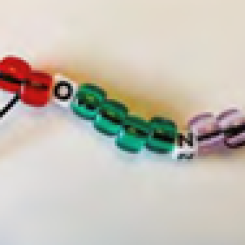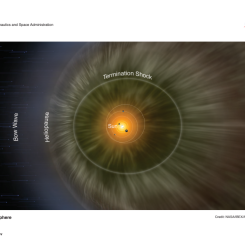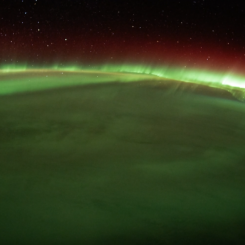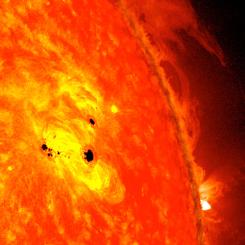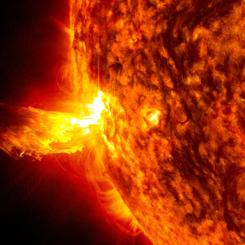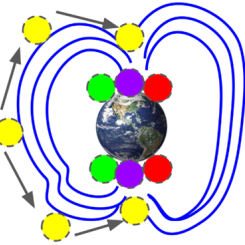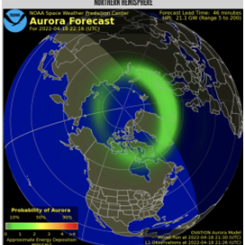Mini Lesson/Activity
Aurora Chalk Art
Overview
In this mini-lesson activity, students use art to demonstrate their knowledge of an aurora.
Materials
- (1) Aurora Chalk Art Handout print one-sided
- (1) Piece of black construction paper
- Chalk, green, red, purple
- Scissors
- Tape
Student Directions
Remember to never look directly at the Sun without proper safety equipment.
Background:
When the solar wind interacts with gases in the atmosphere, ionization occurs, causing the gases in the ionosphere to glow.
This is similar to how the neon lights that you see in store windows work. Electricity excites the different gases in the neon light tubes; different gases glow different colors.
The Earth’s atmosphere is made up of 78% nitrogen, 21% oxygen, and a small amount of argon, carbon dioxide, methane, and some other trace amounts of gases.
When oxygen atoms and molecules collide, they emit the visible green and red light of the aurora. When nitrogen atoms and molecules collide, they emit the visible purple and blue light of the aurora.
Create:
Use the Aurora Chalk Art Handout for directions on how to make the art.
- Cut out the aurora stencil. If making your own, cut a strip of white paper or cardstock in a wavy aurora shape.
- Color the top edge of the stencil with colored chalk.
- Place the colored stencil on your black paper, chalk side up. Smudge the chalk onto the black paper using your finger or a tissue.
- Repeat using different colors to fill the sky with the colors of the aurora.
- Add a cabin, trees, campfires, or other things you might see under the northern lights. Be creative!
Teacher Note
Teachers, these mini lessons/student activities are perfect "warm up" tasks that can be used as a hook, bell ringer, exit slip, etc. They take less than a class period to complete. Learn more on the "My NASA Data What are Mini Lessons?" page.
Teachers who are interested in receiving the answer key, please complete the Teacher Key Request and Verification Form. We verify that requestors are teachers prior to sending access to the answer keys as we’ve had many students try to pass as teachers to gain access.
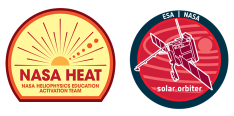
Disciplinary Core Ideas:
- PS2B: Types of Interactions
- PS4A: Wave Properties
- PS4B: Electromagnetic Radiation
- ESS1A: The Universe and its Stars
Crosscutting Concepts:
- Patterns
- Cause and Effect
- Structure and Function
Science and Engineering Practices:
- Developing and Using Models

